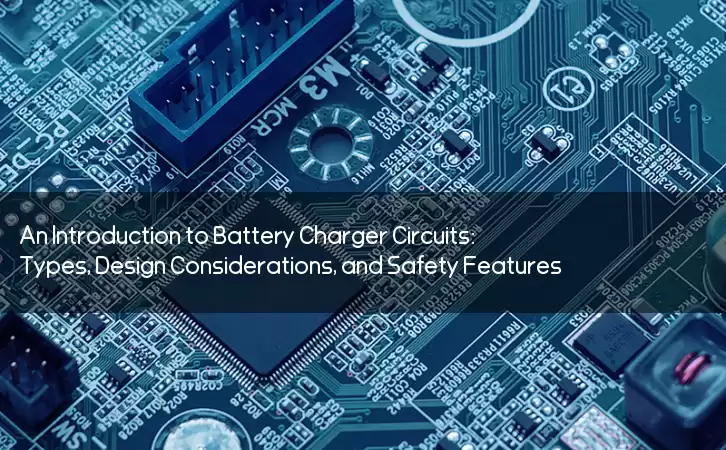Information Center
An Introduction to Battery Charger Circuits: Types, Design Considerations, and Safety Features
Published:2023-07-26 10:33:35 Author:Green WCND Views:32Battery Charger Circuit: An Introduction

A battery charger circuit is an electronic device that provides a controlled charging current to recharge a rechargeable battery. These circuits are used in various applications that require the use of rechargeable batteries such as power banks, mobile phones, laptops, and electric vehicles.

The charging process involves delivering a current to the battery to overcome its internal resistance and allow the storage of electrical energy. The charging current delivered to the battery must be within the battery’s specified charging range to avoid damage to the battery. Moreover, the battery charger circuit should have safety features such as over-voltage and over-current protection to protect the battery and the user.

Types of Battery Charger Circuits
There are several types of battery charger circuits, classified based on the application, the battery chemistry, and the charging method. The following are the most common types:
1. Linear chargers: These chargers use linear voltage regulators to deliver a constant charging current to the battery. They are simple, inexpensive, and suitable for low-power applications. However, they are inefficient and generate a lot of heat, making them unsuitable for high-power applications.
2. Switching-mode chargers: These chargers use switching regulators to deliver a high-frequency pulse current to the battery. They are more efficient and can handle high-power applications compared to linear chargers. They are also smaller, lightweight, and generate less heat.
3. NiCD and NiMH battery chargers: These chargers are designed specifically for nickel-cadmium (NiCD) and nickel-metal hydride (NiMH) batteries. They use a constant-current/constant-voltage (CCCV) charging method, where the charging current is maintained at a constant rate until the battery voltage reaches a predetermined level, after which the charging current is reduced. These chargers can also provide pulse charging, which can improve the battery’s performance and extend its life.
4. Lithium-ion (Li-ion) battery chargers: These chargers are designed for lithium-ion batteries, which are widely used in consumer electronics applications. They use a similar charging method as NiCD and NiMH chargers, but with a more complex charge algorithm that involves monitoring the battery’s state of charge and temperature to optimize the charging process and prevent overcharging and overheating.
Design Considerations
Designing a battery charger circuit requires careful consideration of several factors, including the battery chemistry, the charging current and voltage, the charging time, and the safety features.
The following are some design considerations for battery charger circuits:
1. Battery chemistry: Different battery chemistries require different charging methods, so it’s important to choose the right charger for the battery type.
2. Charging current and voltage: The charging current and voltage should be within the battery’s specified ranges. The current should also be reduced as the battery voltage increases to avoid overcharging.
3. Charging time: The charging time should be optimized to minimize the charging time while ensuring that the battery is properly charged.
4. Safety features: The charger should have safety features such as over-voltage and over-current protection to prevent damage to the battery and the user.
Conclusion
A battery charger circuit is an essential component in any application that uses rechargeable batteries. The choice of charger type and design depends on the application requirements and the battery chemistry. Designers must consider factors such as charging current and voltage, charging time, and safety features to ensure that the battery is properly charged and protected from damage. With the increasing demand for rechargeable batteries in various applications, battery charger circuits will continue to evolve, providing more efficient, reliable, and safer charging solutions.
Battery testers of different voltages exhibit significant differences in several aspects, and a 12V battery tester is primarily used for testing a range of spec···
Battery Testers (battery capacity testers/battery detectors) indeed come in various types tailored for different products. These different types of battery test···
The advantages and disadvantages of battery testers are as follows:AdvantagesFlexibility:Battery testers can accommodate various testing modes, making them adap···
Understanding the testing accuracy of golf cart battery testers is crucial for ensuring the precision of test results. Here are some methods to assess the testi···





